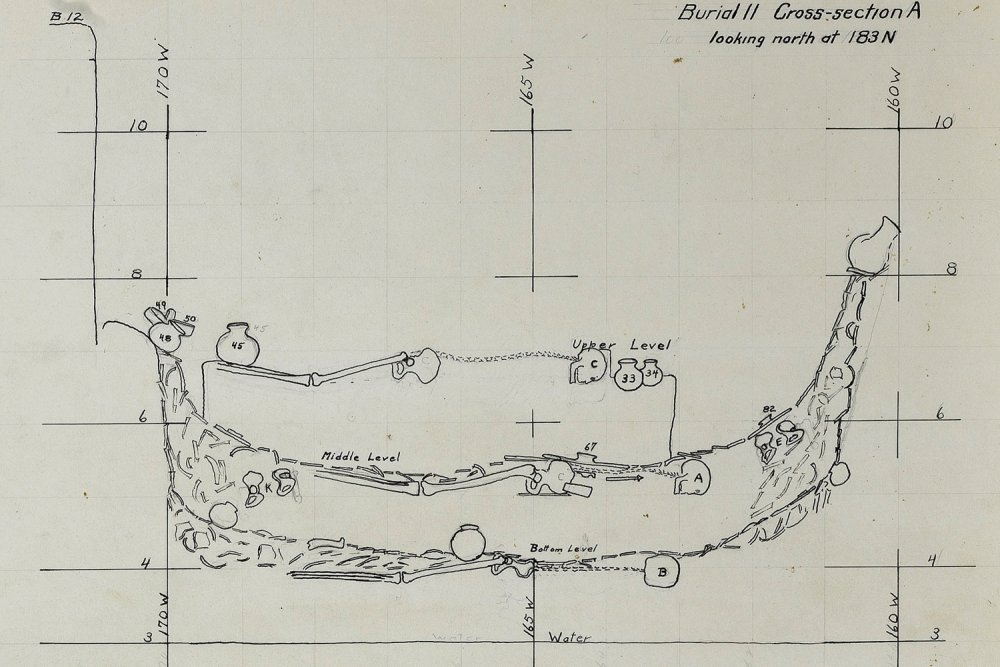Mysterious Sophisticated Gran Coclé Culture Reveals Its Ancient Secrets
Ellen Lloyd – AncientPages.com – The Gran Coclé culture emerged in what is now the Panamanian province of Coclé, near the Santa Marta River. There is extraordinary archaeological evidence the Coclé were a sophisticated Pre-Columbian people, and excavations have revealed some of this ancient culture's secrets.
The influence of Coclé ceramics extended throughout most of the Panamanian isthmus and took the form of spiral decorations and colors typical of this tradition.
Credit: Penn Museum
For more than a thousand years, a cemetery on the banks of the Rio Grande Coclé in Panama lay undisturbed, escaping the attention of gold seekers and looters.
Their gold artifacts reached as far as Chichen Itza and other parts of Central and South America.
Between 1515 and 1520, the Spanish fought with the chieftains of Panama over gold, destroying the social and political foundation of Coclé culture.
In 1940, a Penn Museum team led by archaeologist J. Alden Mason excavated at the cemetery, unearthing spectacular finds. The science team found large golden plaques and pendants with animal-human motifs, precious and semi-precious stone, ivory, animal bone ornaments, and tons of detail-rich painted ceramics.
The Coclé culture made alloys of copper and gold (tumbaga), sometimes adding a small amount of silver. They sometimes gilded the metal objects they made to increase their golden luster.
Amazing objects - intricate gold chest plaques, beaded necklaces, finely carved pendants, painted ceramic pots, bowls, and plates - excavated from the grave of a Coclé Paramount Chief.
This Pre-Columbian culture did not have access to any advanced tools, and they worked metals by hammering without heat, mainly making chest covers and helmets bearing a variety of decorations. They also practiced metal casting using the lost wax technique in order to make three-dimensional figures, and covered artifacts made of wood or bone with gold, silver, or copper leaf. Bone - mainly of deer or peccary was used to make figurines and flutes, and the decorations on these pieces depict other technologies they knew of, such as the atlatl or spear-thrower for hunting.
Astonished when they excavated one massive burial – named Burial 11 that was believed to belong to a Paramount Chief. Inside the huge burial were extraordinary materials together with 23 individuals in three distinct layers, accompanied by a vast array of grave objects.
"This ruler and his ancestors had subdued a majority of the natives in the vicinity. Graves of another type were of greater size and age. They contained two bodies, male and female, buried in an extended position, characteristically face downward, head to the northeast, and arms flexed. Jewelry of stone, bone copper, or gold had been placed with the dead, as well as 30 or 40 pottery vessels, tools, weapons, and fabrics.
This object was found among many other golden pendants, arm cuffs, and plaques, exquisitely crafted and worthy of a great warrior.
All evidence now available indicates that Coclé culture was of late date, that is to say, it flourished in the centuries just before the arrival of the Spaniards. "
View the burial as never seen before: through a to-scale installation highlighting a vast array of grave goods as they were found.
The Coclé culture was artistic and produced beautiful designs that are "noteworthy for their balance and vigorous curved lines. Like most New World art, the patterns are largely derived from life forms, conventionalized at times recognition.
It is generally agreed that most aboriginal processes and alloys used in metalworking were invented in Peru and Bolivia and then spread north and south. Coclé metal objects are linked to Peru both in technique and design but are more closely connected with the Quimbaya and Sinú regions in Colombia whence many articles came in trade. While it is possible to point out connections between Coclé and other cultures, the quality of Coclé art must be regarded as purely local development, ranking among the foremost in indigenous America. 1
Gold Plaque, Sitio Conte, Panama, ca. 700-900 CE. Photo: Penn Museum
The Coclé culture still remains mysterious, but archaeologists, physical anthropologists, art historians, and other specialists are drawing on the materials they have excavated to tell more about this culture's ancient history, traditions and customs.
The rich iconography, sophisticated gold working technologies, and craftsmanship, exacting placement of bodies and materials in the burials offer clues about the world view, artistic style, and social hierarchy of the Coclé.
The art and artifacts uncovered from Burial 11 and throughout the Sitio Conte cemetery were rich in cultural meaning and practical value and provide us with valuable information about Pre-Columbian civilizations.
Updated on March 19, 2022
Written by Ellen Lloyd – AncientPages.com
Copyright © AncientPages.com All rights reserved. This material may not be published, broadcast, rewritten or redistributed in whole or part without the express written permission of AncientPages.com
Expand for references- Lothrop, S. K. "Archaeological Investigation in the Province of Coclé, Panamá." American Journal of Archaeology38, no. 2 (1934): 207-11. Accessed March 7, 2020. doi:10.2307/498075.
More From Ancient Pages
-
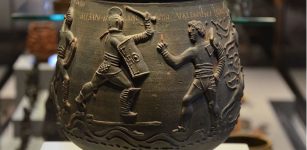 Colchester Vase Offers ‘Startling’ Evidence Of Gladiator Fights In Roman Britain
Archaeology | Mar 6, 2023
Colchester Vase Offers ‘Startling’ Evidence Of Gladiator Fights In Roman Britain
Archaeology | Mar 6, 2023 -
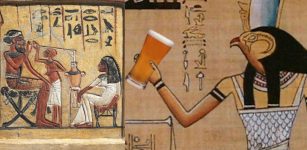 Beer Was Used As Medicine And Payment In Ancient Egypt
Ancient History Facts | Feb 11, 2018
Beer Was Used As Medicine And Payment In Ancient Egypt
Ancient History Facts | Feb 11, 2018 -
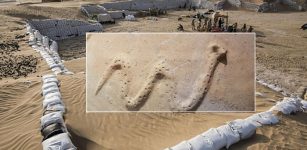 3,000-Year-Old Recycling Center In What Is Now Dubai – Discovered
Archaeology | Jan 8, 2020
3,000-Year-Old Recycling Center In What Is Now Dubai – Discovered
Archaeology | Jan 8, 2020 -
 Aslaug’s Revenge For The Death Of Ragnar Lodbrok’s Sons Eirik And Agnar
Featured Stories | Dec 10, 2018
Aslaug’s Revenge For The Death Of Ragnar Lodbrok’s Sons Eirik And Agnar
Featured Stories | Dec 10, 2018 -
 A Rare Find In Ancient Timorese Mud May Rewrite The History Of Human Settlement In Australasia
Featured Stories | May 28, 2024
A Rare Find In Ancient Timorese Mud May Rewrite The History Of Human Settlement In Australasia
Featured Stories | May 28, 2024 -
 The Name Vatican And Etruscan Goddess Vatika Of The Underworld – What Is The Connection?
Featured Stories | Jun 6, 2020
The Name Vatican And Etruscan Goddess Vatika Of The Underworld – What Is The Connection?
Featured Stories | Jun 6, 2020 -
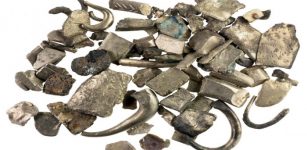 Hacksilber Hoard Dated To 11th Century BC: Eastern Mediterranean Silver Trade Reconstructed
Archaeology | Jul 5, 2021
Hacksilber Hoard Dated To 11th Century BC: Eastern Mediterranean Silver Trade Reconstructed
Archaeology | Jul 5, 2021 -
 DNA From Mysterious Hominin In China Suggests Native Americans’ East Asian Roots
Archaeology | Jul 14, 2022
DNA From Mysterious Hominin In China Suggests Native Americans’ East Asian Roots
Archaeology | Jul 14, 2022 -
 Largest Ever Human Family Tree: 27 Million Ancestors Mapped
Archaeology | Feb 25, 2022
Largest Ever Human Family Tree: 27 Million Ancestors Mapped
Archaeology | Feb 25, 2022 -
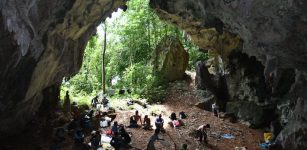 DNA Study Shows Pre-Historic Wallacea Was A Melting Pot Of Human Genetic Ancestries
Archaeology | Jun 9, 2022
DNA Study Shows Pre-Historic Wallacea Was A Melting Pot Of Human Genetic Ancestries
Archaeology | Jun 9, 2022 -
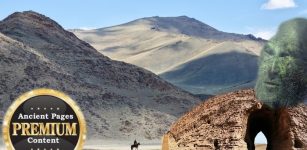 Controversial Unexplained Ancient Mystery In Mongolia – Discovery Of Remarkable Secrets Hidden In Artificial Cave – Part 1
Ancient Mysteries | May 1, 2018
Controversial Unexplained Ancient Mystery In Mongolia – Discovery Of Remarkable Secrets Hidden In Artificial Cave – Part 1
Ancient Mysteries | May 1, 2018 -
 Archaeologists Discover Mysterious Floor Made Of Bones In Alkmaar, Netherlands
Archaeology | Dec 23, 2024
Archaeologists Discover Mysterious Floor Made Of Bones In Alkmaar, Netherlands
Archaeology | Dec 23, 2024 -
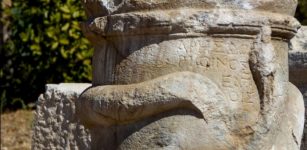 2,000-Year-Old Altar Depicting Snake Figure Unearthed In Lycian City Of Patara
Archaeology | Oct 20, 2020
2,000-Year-Old Altar Depicting Snake Figure Unearthed In Lycian City Of Patara
Archaeology | Oct 20, 2020 -
 Last Of The Giant Camels And Archaic Humans Lived Together In Mongolia Until 27,000 Years Ago
Fossils | Mar 24, 2022
Last Of The Giant Camels And Archaic Humans Lived Together In Mongolia Until 27,000 Years Ago
Fossils | Mar 24, 2022 -
 Two 1,800-Year-Old Sarcophagi Of Wealthy People Accidentally Found At Ramat Gan Safari Park
Archaeology | Feb 22, 2021
Two 1,800-Year-Old Sarcophagi Of Wealthy People Accidentally Found At Ramat Gan Safari Park
Archaeology | Feb 22, 2021 -
 Secrets Of Mica Chambers Of Teotihuacan
Ancient Technology | Jun 12, 2020
Secrets Of Mica Chambers Of Teotihuacan
Ancient Technology | Jun 12, 2020 -
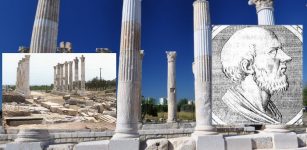 Archaeologists Focus On Greek Poet Aratus’ Memorial Tomb And Ruins Of Soli Pompeiopolis
Archaeology | Aug 12, 2020
Archaeologists Focus On Greek Poet Aratus’ Memorial Tomb And Ruins Of Soli Pompeiopolis
Archaeology | Aug 12, 2020 -
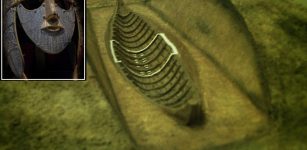 Sutton Hoo Ship Burial And Famous Helmet That Could Belong To Raedwald, King Of All The Kings Of Britain
Artifacts | Jan 9, 2018
Sutton Hoo Ship Burial And Famous Helmet That Could Belong To Raedwald, King Of All The Kings Of Britain
Artifacts | Jan 9, 2018 -
 Ancient Egyptian Village That Is Far Predating Egypt’s Oldest Known Pyramid – Discovered
Archaeology | Sep 3, 2018
Ancient Egyptian Village That Is Far Predating Egypt’s Oldest Known Pyramid – Discovered
Archaeology | Sep 3, 2018 -
 Ancient Secrets Of The Masters Of Mu – Keepers Of Sacred Knowledge – Part 2
Ancient Mysteries | Aug 25, 2018
Ancient Secrets Of The Masters Of Mu – Keepers Of Sacred Knowledge – Part 2
Ancient Mysteries | Aug 25, 2018




